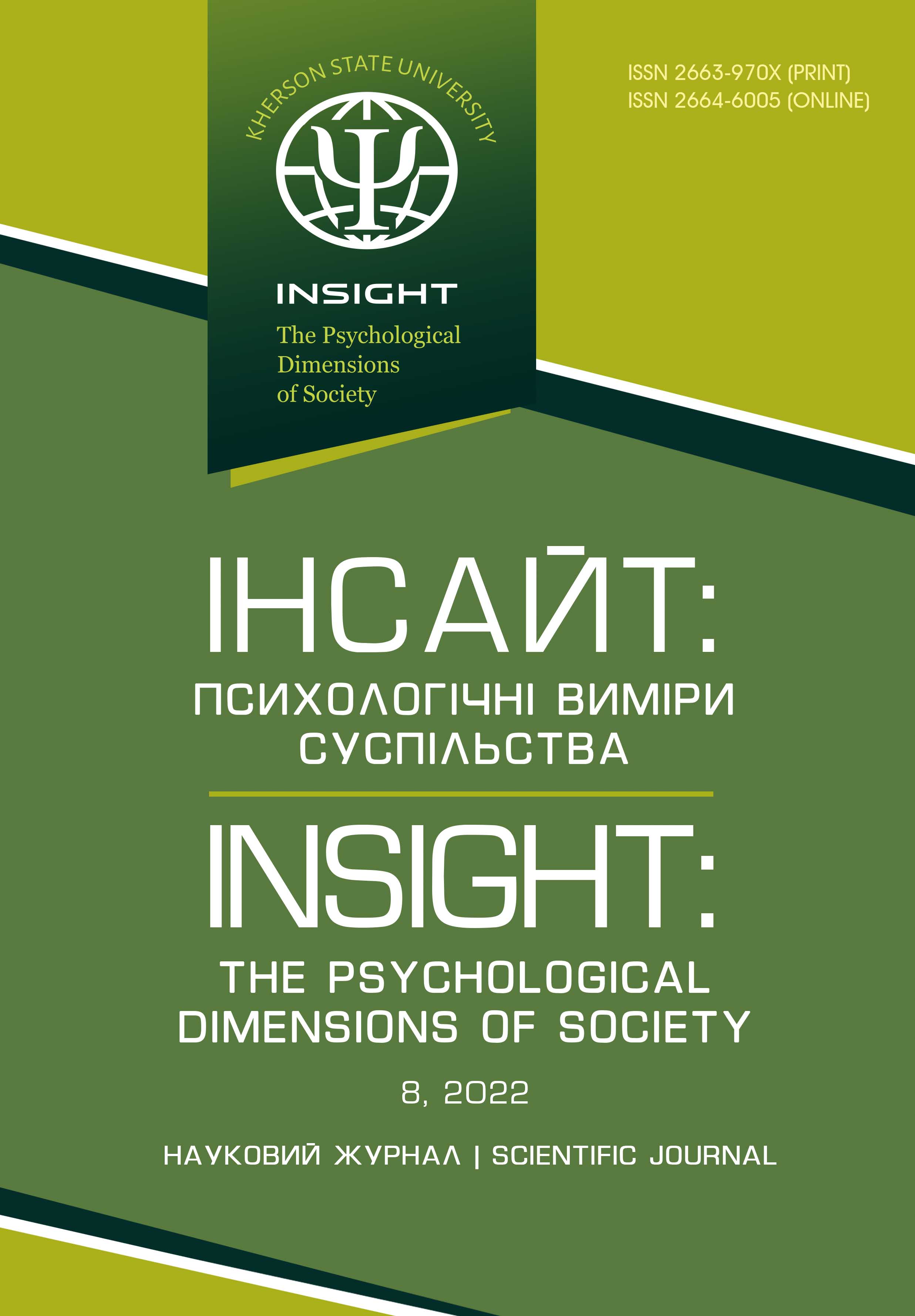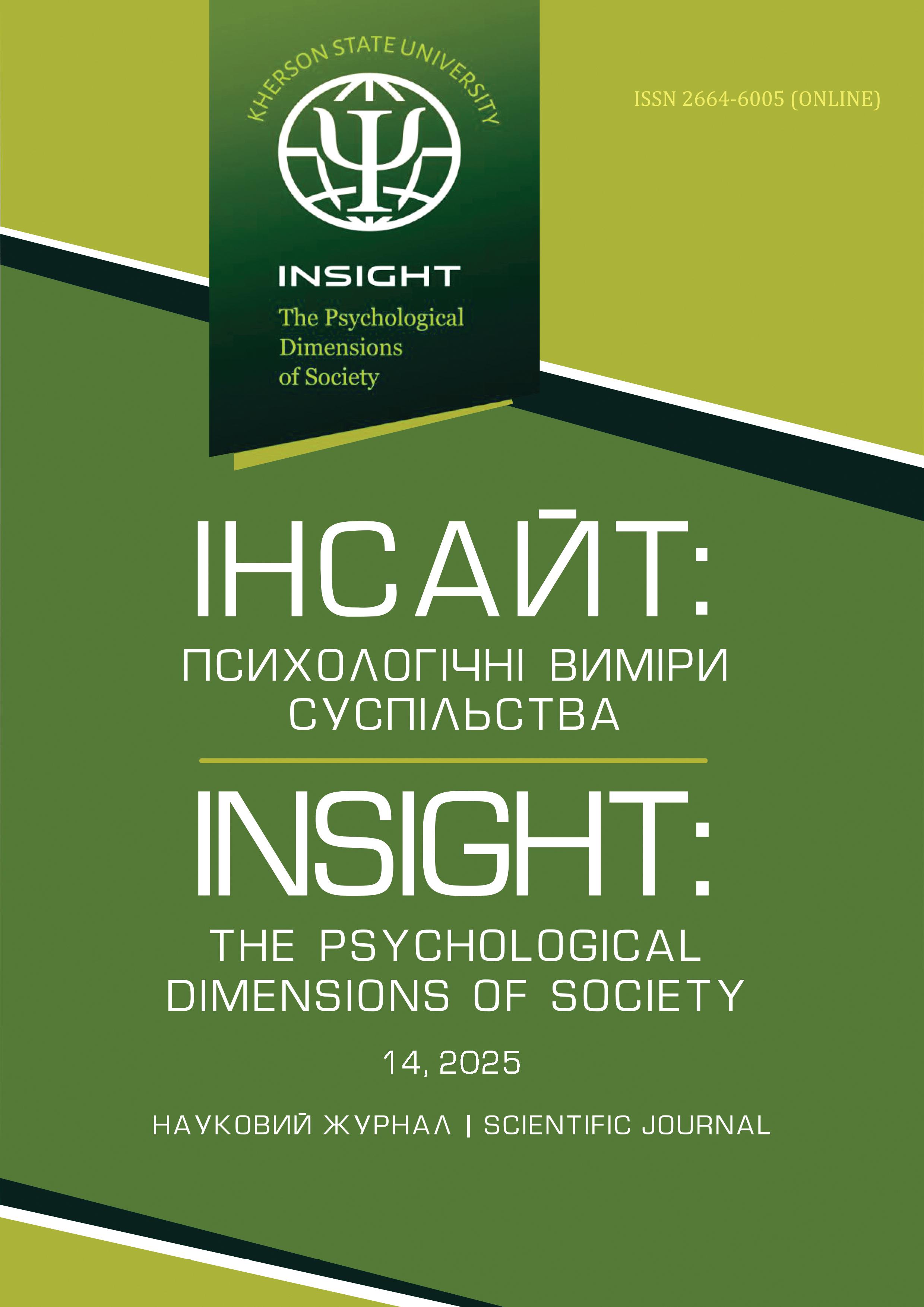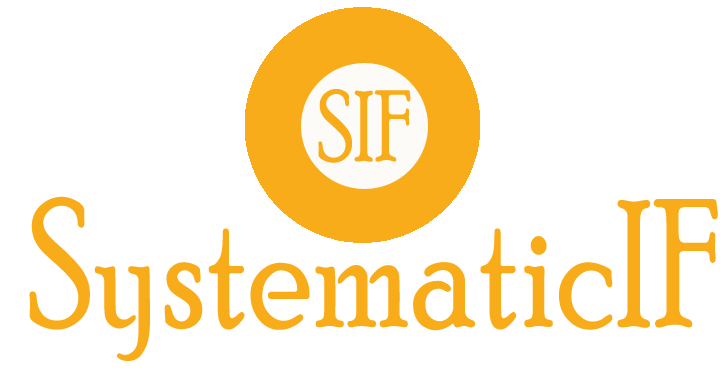Використання засобів віртуальної реальності для релаксації вагітних та породіль: результати пілотажного дослідження
Анотація
Сучасна методологія психологічного супроводувагітних представлена багатьма ефективнимизасобами і напрямками роботи, але вони переважно сфокусовані на допологовому періоді. Допомога психолога безпосередньо в процесі пологівускладнена об’єктивними чинниками, в першучергу – браком підготовлених спеціалістів, якіможуть бути постійно присутні у пологовій заліта працювати у взаємодії з лікарями і породіллями.Тому викликають інтерес засоби, що можуть бутинадані пацієнтам в аудіо- чи відеоформаті післяпопереднього інструктажу. Зокрема, великі перспективи має застосування технологій віртуальноїреальності, що занурюють людину в імерсивнийтерапевтичний простір. Вони активно використовуються для полегшення процедурного та гострогоболю в педіатричних, онкологічних, опікових відділеннях, але досі мало представлені в акушерськійпрактиці та перинатальній психології. Мета цієїроботи – представити попередні результати впровадження ВР-релаксації на етапі перейм у жінок, що народжують вперше. Методи. Методика керованоїрелаксації була розроблена спеціально для потребвагітних і містила вербальні інструкції для глибокого м’язового розслаблення, керовану візуалізацію для посилення слиновиділення та позитивнінавіювання щодо результату пологів, а також 3Dвідео та музичний супровід. До експериментальноїгрупи увійшли 49 учасниць, які використовувалиВР-окуляри з програмою релаксації під час перейм;контрольну групу склали 43 жінки, що народжували традиційним способом, залучаючи всі іншіпослуги пологового відділення. Результати включають дані медичних карток (тривалість пологів,використання анестезії, стан дитини за шкалоюАпгар) та опитування жінок щодо пережитого досвіду через 24-48 годин після пологів. Порівняльнеаналізування підтвердило достовірне зменшеннявикористання знеболювальних препаратів, тривалості пологів, інтенсивності та неприємностіпологового болю; збільшення здатності розслабитися між переймами, а також кращі оцінки стануновонароджених. Важливим є суттєве зростаннязагальної задоволеності пологами та бажаннянароджувати знову в експериментальній групі.Ефективність технології підтверджує теорію психогенного походження пологового болю, а отже –корисність психологічного підходу до керуванняним. Зроблено висновки щодо ефективності втручань, заснованих на м’язовій релаксації породільв поєднанні з технологіями віртуальної реальності. Представлена технологія повністю готова дозастосування в практиці пологових відділень.
Завантаження
Посилання
Askay, S.W., Patterson, D. R., & Sharar, S. R. (2009). Virtual reality hypnosis. Contemporary Hypnosis, 26(1) Special Issue: Hypnotic Analgesia, 40–47. https://doi.org/10.1002/ch.371
Baradwan, S., Khadawardi, K., Badghish, E., Alkhamis, W. H., Dahi A., et al. (2022). The impact of virtual reality on pain management during normal labor: A systematic review and meta-analysis of randomized controlled trials. Sexual & Reproductive HealthCare, 32, 100720. https://doi.org/10.1016/j.srhc.2022.100720
Bastani, F., Hidarnia, A., Kazemnejad, A., Vafaei, M., & Kashanian, M. A. (2005). Randomized controlled trial of the effects of applied relaxation training on reducing anxiety and perceived stress in pregnant women. Journal of Midwifery & Women’s Health, 50(4), 36–40. https://doi.org/10.1016/j.jmwh.2004.11.008
Buckley, S. J. (2015). Executive summary of hormonal physiology of childbearing: evidence and implications for women, babies, and maternity care. Journal of Perinatal Education, 24, 145–153. https://doi.org/10.1891/1058-1243.24.3.145
Carl, E., Stein, A. T., Levihn-Coon, A., Pogue, J. R., Rothbaum, B., Emmelkamp, P., et al. (2019). Virtual reality exposure therapy for anxiety and related disorders: A meta-analysis of randomized controlled trials. Journal of Anxiety Disorders, 61, 27-36. https://doi.org/10.1016/j.janxdis.2018.08.003
Carus, E. G., Albayrak, N., Bildirici, H. M., & Ozmen, S. G. (2022). Immersive virtual reality on childbirth experience for women: a randomized controlled trial. BMC Pregnancy and Childbirth, 22(1), 354. https://doi.org/10.1186/s12884-022-04598-y
Chirico, A., Lucidi, F., De Laurentiis, M., Milanese, C., Napoli, A., & Giordano, A. (2016). Virtual Reality in health system: beyond entertainment. A mini-review on the efficacy of VR during cancer treatment. Journal of Cellular Physiology, 231(2), 275–287.
Dick-Read, G. (1933). Natural Childbirth. London: Heinemann.
Frey, D. P., Bauer, M. E., Bell, C. L., Low, L. K., Hassett, A. L., Cassidy, R. B., Boyer, K. D., & Sharar, S. R. (2019). Virtual Reality Analgesia in Labor: The VRAIL Pilot Study-A Preliminary Randomized Controlled Trial Suggesting Benefit of Immersive Virtual Reality Analgesia in Unmedicated Laboring Women. Anesthesia & Analgesia, 128(6), e93–e96. https://doi.org/10.1213/ANE.0000000000003649
Gür, E. Y., & Apay, S. E. (2020). The effect of cognitive behavioral techniques using virtual reality on birth pain: a randomized controlled trial. Midwifery, 91, 102856. https://doi.org/10.1016/j.midw.2020.102856
Hoag, J. A., Karst, J., Bingen, K., Palou-Torres, A., & Yan, K. (2022). Distracting Through Procedural Pain and Distress Using Virtual Reality and Guided Imagery in Pediatric, Adolescent, and Young Adult Patients: Randomized Controlled Trial. Journal of Medical Internet Research, 24(4), e30260. https://doi.org/10.2196/30260
Indovina, P., Baron, D., Gall, L., Chiric, A., De Pietr, G., & Giordan, A. (2018). Virtual Reality as a Distraction Intervention to Relieve Pain and Distress During Medical Procedures. A Comprehensive Literature Review. The Clinical Journal of Pain, 34(9), 858–877. https://doi.org/10.1097/AJP.0000000000000599
Mongan, M. F. (2005). HypnoBirthing: The Mongan Method: A natural approach to a safe, easier, more comfortable birthing. 3rd Edition. Publisher Health Communications.
Leap, N., Dodwell, M., & Newburn, M. (2010). Working with pain in labour: An overview of evidence. New Digest, 49, 22–26.
Li, L., Yu, F., Shi, D., Shi, J., Tian, Z., Yang, J., et al. (2017). Application of virtual reality technology in clinical medicine. American Journal of Translational Research, 9(9), 3867–3880. https://www.ncbi.nlm.nih.gov/pmc/articles/PMC5622235/
Lowe, N. K. (2002). The Nature of Labor Pain. American Journal of Obstetrics and Gynecology, 186(5 Suppl Nature), 16–24. https://doi.org/10.1067/mob.2002.121427
Nasiri, S., Akbari, H., Tagharrobi, L., & Tabatabaee, A. S. (2018). The effect of progressive muscle relaxation and guided imagery on stress, anxiety, and depression of pregnant women referred to health centers. Journal of Education and Health Promotion, 7, 41. https://pubmed.ncbi.nlm.nih.gov/29619392/
Tick, H., Nielsen, A., Pelletier, K.R., Bonakdar, R., Simmons, S., Glick, R., Ratner, E., Lemmon, R. L., Wayne, P., & Zador, V. (2018). The Pain Task Force of the Academic Consortium for Integrative Medicine and Health. Evidence-Based Nonpharmacologic Strategies for Comprehensive Pain Care: The Consortium Pain Task Force White Paper. EXPLORE, 14(3), 177–211. https://doi.org/10.1016/j.explore.2018.02.001
Velvovsky, I., Platonov, K., Ploticher, V., & Shugom, E. (2002). Painless Childbirth Through Psychoprophylaxis Honolulu: University Press of the Pacific.
Won, A. S., Bailey, J., Bailenson, J., Tataru, C., Yoon, I., & Golianu, B. (2017). Immersive Virtual Reality for Pediatric Pain. Children, 4(7), 52. https://doi.org/10.3390/children4070052
Wong, M. S., Spiegel, B., & Gregory, K. D. (2021). Virtual Reality Reduces Pain in Laboring Women: A Randomized Controlled Trial. American Journal of Perinatology, 38(S01), e167–e172. https://doi.org/10.1055/s-0040-1708851
Автори, які публікуються у науковому журналі, погоджуються з наступними умовами:
· Всі наукові праці можуть вільно копіюватися і поширюватися на будь якому носії і в будь якому форматі, за умови зазначення покликань на вихідні дані наукової праці.
· Автори залишають за собою право на авторство своєї роботи та передають журналу право першої публікації цієї роботи на умовах ліцензії Creative Commons Attribution License.
· Автори мають право укладати самостійні додаткові угоди щодо неексклюзивного розповсюдження роботи у тому вигляді, в якому вона була опублікована цим журналом (інституційний репозитатрій, особистий веб-сайт, монографія), здійснивши первинне покликання на публікацію роботи в цьому журналі.




































